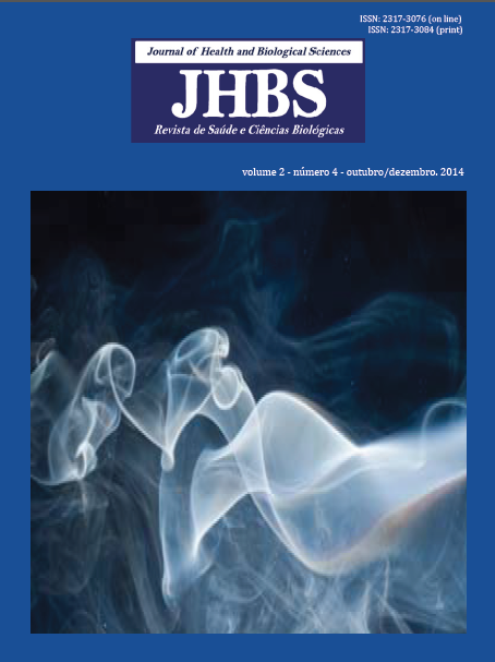Effect of N-acetylcysteine on mitochondria isolated from the rat kidney exposed to an iodinated radiographic contrast agent
DOI:
https://doi.org/10.12662/2317-3076jhbs.v2i4.109.p163-167.2014Palabras clave:
N-acetylcysteine, Mitochondria, Radiocontrast iobitridol, NephropathyResumen
Background: Contrast-induced nephropathy (CIN) is an acute complication associated with iodinated radiographic contrast agents. N-acetylcysteine (NAC), an antioxidant agent, has often been used to prevent CIN; however, reports of its efficacy are conflicting. In the kidney, mitochondrial dysfunction has been associated with acute and chronic ischemic and nephrotoxic injury. The aim of the present study was to investigate the effect of NAC on oxygen consumption in mitochondria isolated from rat kidneys exposed to a radiographic contrast agent. Methods: Four groups of Wistar rats were evaluated including a control group. The experimental groups were injected intraperitoneally with: 5 mL/kg of body weight of iobitridol (300 mg/mL); NAC (100 mL/kg at 24, 12 and 2 hours prior to saline infusion); and NAC prior to an infusion of 300 mg/mL of iobitridol. Twenty minutes after the intraperitoneal infusion of the contrast agent or saline, all the animals were sacrificed and their kidneys were collected. Oxygen consumption was measured polarographically in the sediment containing principally mitochondria. Results: Mean oxygen consumption was 14.8% higher in the group exposed to iobitridol compared to the control group. Pretreatment with NAC before the iobitridol infusion inhibited the increase in mean oxygen consumption (p<0.05). There were no significant differences in the endogenous respiration of mitochondria isolated from kidneys in the control group compared to the groups treated with NAC (p>0.05). Conclusion: The findings of the present study confirm a certain protective effect of NAC in rat kidneys exposed to an iodinated radiographic contrast medium.
Descargas
Descargas
Publicado
Cómo citar
Número
Sección
Licencia
Derechos de autor 2014 Journal of Health and Biological Sciences

Esta obra está bajo una licencia internacional Creative Commons Atribución-NoComercial 4.0.




















